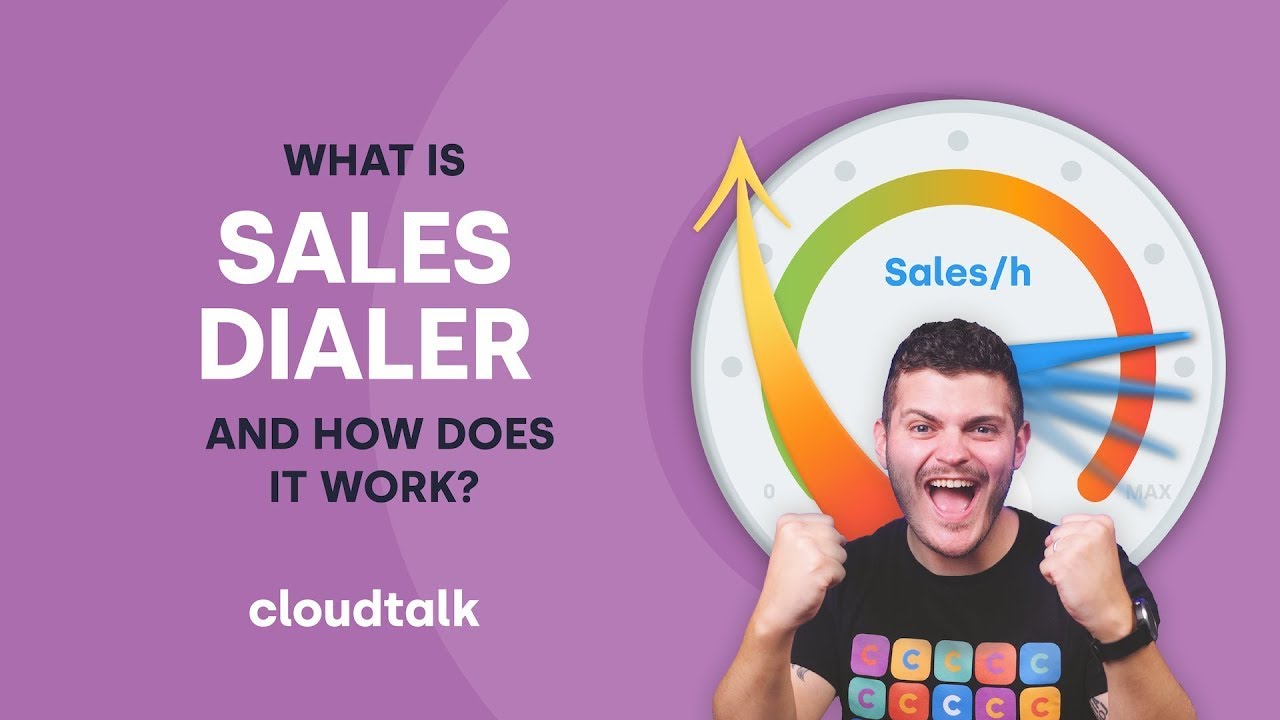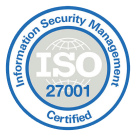Call center automation is a growing trend. According to Gartner research, by 2026, one in 10 agent interactions could be automated. That’s compared to only 1.6% in 2022. And that’s just direct customer interactions. There are plenty of other elements of call center operations that can also benefit from automation.
The time is now, therefore, to learn all you need to know about call and contact center automation. And that’s precisely what you can do right here.
Key Takeaways:
- Call center automation is the use of AI technology to automate certain processes, making them faster and more efficient.
- Conversation AI, Natural Language Processing (NLP), and machine learning are three aspects of AI technology that are key to automation of call center operations.
- Call center automation can help you enhance efficiency, improve customer satisfaction, boost engagement of your agents, and more.
- There are many areas of call center process automation, including automating customer interactions, agent scheduling and training, forecasting, and more.
- Call center automation solutions, like CloudTalk, can help you easily introduce automated processes to your workflows.
What Is Call Center Automation?
Call center automation means that artificial intelligence (AI) technology completes tasks without the need for human input. It can apply to customer interactions, as well as the many behind-the-scenes workflows and processes that are essential to call center operations.
That makes for a good, simple call center automation definition, but what does that mean, in practice? The combination of automation and artificial intelligence with your current solutions can help improve existing processes.
For instance, it can support the establishment of an intelligent IVR, a tool that helps call centers handle many inbound calls more efficiently. That would otherwise be impossible.
The Technology Behind Call Center Automation
Call center automation technology is underpinned by AI, but what does that really mean?
The most common automation applications in a call or contact center involve three main aspects of AI technology:
- Conversation intelligence: Conversation intelligence is the branch of AI that analyzes and understands conversations, be they written or spoken. It can identify not just what’s spoken about but also how, giving insights into sentiment and more.
- Natural Language Processing (NLP): NLP helps conversation intelligence to work. It’s the ability of AI to both analyze and synthesize language, as humans do in real-life. NLP, therefore, is crucial to conversation AI driven chatbots, allowing them to hold genuine, useful conversations with customers.
- Machine learning: Machine learning is the process by which any AI application gets “more intelligent” over time. It’s the ability of AI to analyze more and more data, and improve its responses to it, without human input. In the context of automated call center interactions, it’s machine learning that ensures AI-customer communication should get better over time.
3 Key Elements to Make Call Center Automation Work
Effective automation isn’t just about identifying processes or tasks to hand off to AI and then forgetting about them. Automated call center software should also feature these crucial elements:
#1 Integration with existing processes: Automated workflows should sit seamlessly within your existing operations. That means that behind-the-scenes automation (like updating CRMs, scheduling follow-ups) should happen without extra input from agents.
#2 Natural expression: Customer-facing contact center automation tools need to handle human interactions smoothly, giving your customer a feeling of natural conversation. In other words, communication needs to be as close to an interaction between humans as possible, in written as well as in a spoken manner. This is where NLP comes in.
#3 Language flexibility: Each customer communicates a bit differently. They use specific expressions, different pronunciation, and a variety of accents. Automation software needs to accommodate and perfectly handle each type of communication.
Benefits of Call Center Automation
Why is call center automation a necessity? It takes your business a step closer to an exceptional customer service experience. For example, by shortening waiting time or preventing unnecessarily long agent-customer interactions.
What’s more, it also delivers a range of advantages for agents and your business as a whole.
Here are the main benefits of call center automation:
Enhance Your Efficiency
One of the greatest benefits of automation in the call center is that you can enhance efficiency. By applying AI to your processes, you can streamline them to provide top-quality service to customers, more quickly.
For instance, smart call routing—like CloudTalk’s Call Flow Designer—means you send customer calls to the agents who can solve their issues in less time. That’s great for each caller and also means your agents can handle more calls in a shorter space of time.
That’s not the only way automated contact center solutions can aid efficiency. You could also use conversation AI to power chatbot solutions that can handle simple queries with no agent involvement at all.
Once again, that’s great for the customer who has their question answered and for agents who can handle more complex issues for others. A classic win-win.
Eliminate Repetitive Tasks
Call center automation is not here to replace human agents. It’s here to cooperate with them, making their everyday job easier. When the empathy of a human and the effectiveness of a robot connect, there goes your perfect call center concept. Why?
Automation motivates your employees to work more productively by eliminating repetitive tasks from their everyday routine. While tools like a robot voice generator take care of simple, well-defined tasks, your agents have more time to handle inquiries that require empathy and complex troubleshooting.
Automation can handle internal tasks, such as collecting customer information, entering data into CRMs, creating tickets, scheduling calls, and more.
This kind of workflow automation, therefore, is one of the key benefits of contact center automation.
Increase Customer Satisfaction
According to Zendesk research, 81% of customers say a positive customer service experience makes them more likely to make another purchase from the brand in question.
The importance of customer satisfaction to businesses, therefore, cannot be overstated. Your call or contact center is often your most direct line to your customers, making it a crucial touchpoint for ensuring their happiness.
Automated call center solutions can greatly improve your chances of boosting customer satisfaction. After all, greater efficiency means you’ll be able to serve more customers in a shorter period of time. Lower wait time is also clearly a positive for any customer.
What’s more, effective contact center automation also improves your chances of resolving any customer’s issue, first time. That’s important as research suggests that every 1% increase in first contact resolution rate equates to a 1% increase in customer satisfaction.
Improve Agent Engagement
As well as enhancing operational efficiency and boosting customer satisfaction, call center automation can also positively impact agent engagement.
Let’s take automating After-Call Work (ACW) as an example. Call center automation AI and easy integrations with CRMs can take various time-consuming tasks off your agents’ plates. For example, adding call notes to the CRM, scheduling follow-ups, and other data entry.
These are tasks that—while important—agents don’t often find fulfilling. What’s more appealing to many of them is the opportunity to interact with customers and problem-solve their issues. With AI handling the ACW, they’re far freer to engage in these more challenging tasks. This added focus on meaningful interaction also strengthens overall client management practices, as agents can better understand client needs and deliver more personalized support.
Better engaged agents are likely to approach their jobs with enthusiasm and initiative. What’s more, they’re less likely to leave or take unnecessary sick days. With agent turnover and absenteeism the biggest problem for 47% of managers operating call centers, according to SQM Group research.
Boost First Call Resolution and Other Key Metrics
Sometimes, assessing the impact of improvements to your call center operations can be tricky. For instance, how do you really know whether call center automation is enhancing efficiency and improving customer satisfaction?
The answer is call center analytics and tracking the impact of automation on key performance indicators (KPIs). Fortunately, there are a variety of those which effective automation can positively affect.
First call—or contact—resolution (FCR) is a prime example. With the right automated call center solution, you can route calls more efficiently to ensure each caller reaches the right agent. That eliminates frustrating transfers between agents and increases the number of issues solved at the first touchpoint.
What’s more, directing callers to agents you know are capable of solving their issues can boost other related metrics, too:
- Average Handling Time (AHT)
- Average call length
- Cost Per Call (CPC)
Reduce Operational Costs
Speaking of costs, when it comes to the benefits of call center automation, there is also the impact it has on your bottom line. Effective automation, after all, can help you to reduce operational costs.
By improving efficiency and taking repetitive, time-consuming tasks away from your agents, you increase the number of calls they can handle per hour and shift. That means, for the same salary outlay, more customer issues get solved.
Cost per call or contact will fall as a result, and this is a good example of how automation can reduce operational costs.
Deliver 24/7 Customer Support
Some businesses can operate their call centers and have agents on-the-clock day and night. Many, however, don’t have the logistical capability—or budget—to do so. What if, however, you have customers that do expect 24/7 support?
Call or contact center automation helps here, too. Chatbots with conversation AI technology or even IVR menus programmed with pre-recorded messages can help provide answers even when your agents aren’t available.
If a caller has a slightly more complex issue, your chatbot or IVR could suggest some self-service alternatives. Perhaps, for example, they could check out your online knowledge base or help center to find their answer.
Contact Center Automation Use Cases
You can apply call center automation to various areas of your operations and in various ways. The following are just some examples of the use cases common among recent call center automation trends:
#1 Introduce Self-Service Interactions
Self-service automation is the direct automation of customer interactions, such as through chatbots or IVR. Chatbots can also proactively initiate a conversation with website visitors, offering them help.
Not only do these automation processes reduce solving time, but they also offer 24/7 services and save money by lowering the need for human-to-human contact. It really pays off, since around ¾ of millennials nowadays prefer automated services before interactions with people.
Benefits Overview:
- Offering 24/7 service
- Saving time by fast data search
- Cheaper solution due to reducing a need for more agents
- Automated information popularity grows
#2 Streamline and Automate Workflows
Workflow automation is all about taking those repetitive tasks from agents’ shoulders. Allowing automation to handle these tasks saves a significant amount of agents’ time and energy. Therefore, productivity grows and mistakes get reduced.
Call center automation software may take over processes such as locating information, switching between applications, covering multiple channels, collecting and storing data, or even handling follow-ups with leads.
It is also capable of dealing with invoices or sending follow-up emails and text messages. Those may contain, for example, a survey to rate your agent’s performance or any kind of information requested by the client – conversation transcriptions, purchase history, etc.
As well as the right automated call center software, to make workflow automation work effectively, native integrations with your CRM are also critical. They make automated tasks like updating customer records, scheduling follow-up calls, and more, far simpler.
Benefits Overview:
- Saving time by handling repetitive tasks
- Giving agents space to concentrate on more complex tasks
- Maintaining work-life balance by reducing certain responsibilities
- Reducing mistakes and boosting productivity
#3 Shorten Sales Cycles
This form of automation is a bit more specific, concentrating on marketing and—particularly—sales tasks.
Basically, Sales automation refers to automating and simplifying all tasks relevant to closing deals and making a profit. Sales automation can even shorten your sales cycle.
It can take care of onboarding and executing customer call center campaigns or fast-collect important data for offering a tailored customer experience. Sales automation may also effectively handle sending personalized email offers, information about new products and services, updates of purchase delivery, etc. Choosing reliable SMTP providers ensures these automated communications reach customers without delays or deliverability issues.
Therefore, once again, it saves agents time by handling some of their tasks.
Benefits Overview:
- Collecting large amounts of useful customer data
- Helping with sales cycle by automating and simplifying tasks
- Saving time and money due to much faster task execution
- Relieving agents from repetitive tasks
Check out how you can improve calling with Sales Dialer Software:
#4 Provide Automated Agent Guidance
The job of an agent, in many cases, isn’t easy. They need to keep a lot of things in mind, such as specific technical information, sales-related safety regulations, and more. And let’s face it, not even the most exceptional agents can remember everything. That is another area where call center automation comes in handy.
Automated agent guidance refers to real-time assistance, helping agents in specific situations while they interact with customers. For example, reminding them of all rules or regulations and advising in necessary troubleshooting steps. It may come in the form of a chatbot, scripts, visual mapping, or more.
Smart AI automation systems are capable of reading situations and using language processing or sentiment analysis. Based on the insights they discover, the systems send relevant guidance to agents.
Benefits Overview:
- Providing real-time guidance for agents
- Educating agents
- Reassuring accuracy of all provided information
- Eliminating a need of a human agent assistance
#5 Make Scheduling More Efficient
Workforce optimization is vital to the smooth-running of any call or contact center. One major part of that is the effective scheduling of agents to take or make calls.
Have too few agents on shift and you may keep customers waiting, extend handling time, and even miss your service level agreement (SLA) targets. Have too many on shift and you’ll be paying agents to sit at their workstations, doing nothing.
Traditionally, then, scheduling takes up a lot of a call center supervisor or manager’s time. To enhance visibility and plan more efficient shifts, many call center teams use a time tracking app for employees like Toggl Track. It helps monitor how agents spend their workday and supports smarter workforce planning and resource allocation.
Automation and AI can help here, too. AI-powered algorithms can quickly and accurately analyze all the data involved in agent scheduling.
That includes:
- Predicted call volumes
- Agents currently scheduled for work
- Times that agents are scheduled for work
- Which other agents are available
Having analyzed this data, AI-powered automation solutions can then assist managers in more quickly generating the perfect schedules.
Benefits Overview:
- Saving time for call center managers and supervisors
- Maintaining standards of customer support
- Easing pressure on agents
- Reducing operational costs
#6 Improve Forecasting
Reacting to trends is part and parcel of day-to-day call center operations. However, it’s even better if you can predict trends and changes before they happen and be prepared in advance.
That’s where forecasting comes in. It’s the collection and analysis of call center data to extract insights and predict future developments. Most fundamentally, that means predicting when you’ll have high volumes of calls and ensuring you can handle them effectively.
Such data analytics is child’s play for AI algorithms. By applying automation to call center forecasting, you can stay ahead of the game, without your staff spending hour upon hour crunching the numbers.
Benefits Overview
- Predicting and proactively prepare for busy periods
- Saving time on manual forecasting
- Cost-efficiency

3 Common Challenges of Implementing Call Center Automation
Now you’re up-to-date with the benefits and use cases of call center automation—as well as some contact center automation trends—you may be considering it for your call center.
If so, you’ll want to know some of the issues and challenges you may face along the way:
Balancing Automation and Human Interaction
The best call center automation ideas are those that support your existing agents with AI. You shouldn’t think of automation as the replacement of human input, especially not when it comes to customer interactions.
While 70% of consumers do believe that AI has become a modern part of customer service, the human touch is still often appreciated. For instance, 58% of consumers recently reported being concerned about AI being used by chatbots to answer their questions. Introducing call center automation, therefore, is a delicate balancing act.
Automating processes saves time and resources, as well as enhancing efficiency. However, take things too far, and you risk alienating customers. They may start thinking your bottom line means more to you than they do. Truly personal and engaging customer experiences do still need human input.
Here are some tips to get the balance right:
- Get agent input before introducing any automation
- Always give callers an option to speak to a human if they wish to
- Use surveys to gather customer feedback so you can quickly spot any issues with automation.
Getting Employee Buy-In and Training Them Effectively
This challenge of implementing call center automation is intrinsically linked to the first one. If your workforce feels you’re introducing AI in order to replace—rather than support—them, then they’re unlikely to be in favor of such changes.
If you do aim to introduce automatic call center workflows or processes, make sure to get employee buy-in early.
Here are some tips for doing so:
- Identify the right processes to automate—those that agents find time-consuming
- Keep your teams fully informed of the changes you plan to make at all stages
- Implement automation gradually
- Carefully track all automation efforts and seek employee feedback on their implementation.
Training your staff to get the most out of any automation is also crucial. That means educating them on the capabilities of your automated call center software and providing any support they need in using it.
Choosing the Right Automation Software
A final potential challenge when it comes to implementing call center automation is selecting the right solution to support your call center. There are now lots of contact center automation tools on the market.
At the very least, you need to ensure your chosen platform:
- Is easy to configure and use
- Integrates with your existing business tools—particularly, your CRM
- Is reliable and secure
- Has all the features and functions you require. Is disclosed in your website’s privacy policy.
To learn more about choosing the right call center automation solutions, read on.
How to Decide Which Contact Center Processes to Automate First
Automation has become essential for scaling customer service while maintaining high standards of speed, quality, and personalization. But not all tasks are equally suited for automation—and choosing the wrong ones can backfire. That’s why contact center leaders need a clear, strategic framework to identify which processes to automate first.
Prioritizing the right tasks ensures early wins, minimizes risk, and maximizes both operational efficiency and customer satisfaction.
Key Criteria for Selecting Processes to Automate
Task Characteristics
- High-volume and repetitive tasks: These are prime candidates for automation. Think of actions like data entry, password resets, call routing, or responding to FAQs—anything that happens often and follows a predictable path.
- Rule-based processes: tasks governed by structured logic and clear decision trees—such as updating CRM fields or pulling customer records—can be reliably handled by automation without sacrificing accuracy.
- Low need for human empathy or judgment: tasks that don’t require emotional intelligence, such as appointment confirmations or order tracking, are ideal. In contrast, sensitive issues like escalations or complex complaints should remain human-led.
Business Impact
- Operational bottlenecks: Focus on tasks that slow down your service, increase wait times, or cause customer frustration. Automating these can directly improve KPIs like first call resolution (FCR) or average handle time (AHT).
- Cost reduction potential: Automating repetitive work frees up agents to focus on higher-value conversations and reduces dependency on large support teams—translating to significant savings.
- Customer experience enhancement: Prioritize automations that reduce response times, offer 24/7 availability, and bring more consistency to customer interactions. The goal is to make the customer journey smoother—not more robotic.
Implementation Feasibility
- Ease of Integration: Choose processes where automation can plug into your existing systems with minimal development effort—APIs, CRM integrations, or cloud tools can accelerate deployment.
- Scalability: Automate tasks that can easily handle increased volume as your business grows or during seasonal spikes.
- ROI Measurability: Start with processes where impact can be clearly tracked—whether through cost savings, improved CSAT or NPS, shorter call times, or higher resolution rates.
Example Processes to Automate First
- Greeting and call routing via IVR
- Password resets and basic account lookups
- Order status and tracking
- Routine appointment scheduling
- FAQ responses through knowledge base access
5 Practical Steps to Integrate AI-Powered Automation Into Your Tech Stack
Rolling out call center automation isn’t just about choosing a tool—it’s about seamlessly integrating it into your existing workflows. Here are the practical steps to do it right:
- Assess your current tech stack: Start by mapping out your existing infrastructure. Identify which platforms (like your CRM, helpdesk software, or VoIP system) are central to your operations and ensure any automation tools you choose are compatible via APIs or pre-built integrations.
- Define automation goals and kpis: whether you’re aiming to reduce average handle time, improve first call resolution, or streamline after-call work, set measurable targets up front. This helps you choose the right tools and track their success.
- Choose modular and scalable solutions: Opt for automation platforms that allow phased rollouts. This lets you test functionality in smaller use cases—like automated password resets or routing—before expanding.
- Implement in phases with cross-functional input: Collaborate with IT, customer support, legal, and compliance teams during implementation. Launch pilot programs and collect feedback from both agents and customers to refine flows early on.
Train your agents on new processes: Equip agents with training so they understand how automation supports their roles and how to interact with the new tools, such as using AI-generated insights during live calls.
Best Practices for Implementing Call Center Automation
Follow these best practices to ensure a smooth rollout and lasting results:
- Define clear objectives: Identify your goals—such as reducing wait times, improving first-call resolution, or lowering after-call work—and set measurable KPIs.
- Choose the right tools: Select automation solutions that address your needs, from IVR and call routing to workflow automation. Ensure they integrate seamlessly with your CRM and support channels.
- Focus on customer experience: Personalize interactions, maintain clear escalation paths to live agents, and collect feedback to refine automation flows.
- Ensure compliance and security: Follow regulations like GDPR or CCPA and safeguard customer data during all automated processes. This includes encrypting communications, managing user consent, restricting data access, and maintaining audit logs. Choosing automation tools with strong security certifications—like SOC 2 or ISO 27001—also helps reduce risk and build customer trust.
- Train and support your team: Provide thorough onboarding for agents to use automation tools effectively, and offer ongoing coaching.
- Monitor and improve: Track performance metrics regularly and adjust workflows to keep automation aligned with business goals and customer needs. To measure ROI effectively, monitor key indicators like FCR, AHT, CSAT, and Cost Per Call.
What to Look For From Call Center Automation Software
The right call center automation solutions help your business harness all the benefits we’ve discussed with the minimum of fuss. Here’s what to think about when choosing your tool:
Features to Meet Your Unique Needs
Before you select an automation solution, take the time to clearly define the needs of your call center. What are your automation goals? Which areas of operations would most benefit from automation?
Once you know the answers to these questions, you can identify software features that are must-haves, those that are nice-to-have, and those you don’t need at all.
For instance, if a primary goal is to save time that agents spend taking notes on calls, then automatic call transcription is a must-have feature. If you want to improve first call resolution above all else, smart, AI-powered call routing is critical.
The Right Tools for the Job
Not all automation tools serve the same purpose—and each excels at streamlining different aspects of service operations. Here’s a breakdown of where each shines:
- IVR (Interactive Voice Response) is ideal for front-end call routing and simple tasks like checking order status or collecting caller information before connecting to an agent. It’s a must for improving first-response speed and reducing hold times.
- AI Voice Agents take IVR a step further. These voicebots use natural language processing and speech recognition to handle conversations more intelligently. They can answer FAQs, qualify leads, confirm appointments, and even resolve simple issues—without involving a human agent. AI voice agents are especially effective for managing high call volumes while maintaining a personalized experience.
- AI Chatbots are excellent for handling routine inquiries via chat channels, delivering 24/7 assistance, and deflecting low-complexity queries from agents.
- Robotic Process Automation (RPA) works best behind the scenes. It automates repetitive, rule-based tasks like data entry, CRM updates, or cross-system data synchronization—freeing up agents to focus on customer interactions.
- Workforce Management Bots help optimize internal operations by automating shift scheduling, forecasting workloads, and managing agent availability in real time.
The best results often come from combining these tools strategically to automate both customer-facing and backend processes.
Native Integrations With the Tools You Already Use
Your chosen contact center automation tool won’t be operating in a vacuum. To get the most out of it, it should work in harmony with your other software tools.
Therefore, you should look for platforms that integrate seamlessly with the other solutions in your tech stack.
CloudTalk, for example, integrates with a wide range of popular CRMs, including:
- HubSpot
- Zendesk
- Salesforce
- Pipedrive
- Zapier
- And more.
Built-In Analytics
One of the great benefits of AI is its ability to quickly and accurately analyze large volumes of data. Like the kind of data your call center generates from hundreds—or even thousands—of customer interactions, weekly.
Therefore, you’ll want your chosen automation platform to include embedded analytics capabilities. These give you easy-to-understand, actionable insights from your data. The kind of insights you can use to make impactful decisions and continually improve call center operations.
Top 5 Call Center Automation Software Providers for Businesses
With the call center automation market growing rapidly, businesses have more options than ever—each offering different tools, pricing models, and strengths. To help you choose, here’s a side-by-side look at five leading providers:
Provider
Starting Price
Key Features
Best For
$19/user/month (NAM & LATAM) or $25/user/month
SMBs and growing teams
$85/user/month
Call Routing, Auto Dialer, Predictive Dialer, IVR
Small businesses and large enterprises
$20/user/month
Advanced Dialing Options, Intelligent Call Routing
All-size businesses needing AI-powered communications
$75/user/month
Omnichannel Support, Advanced Call Automation, AI-Powered Self-Service
Large enterprises
Will Automation Eliminate Human Agent Roles—or Simply Redefine Them?
As call center automation becomes more sophisticated, a common concern arises: Will it replace human agents entirely? The short answer is no. Rather than eliminating human roles, automation is redefining them—and in many ways, elevating them.
From Routine Execution to Strategic Contribution
Automation handles the repetitive, time-consuming, and rule-based tasks that used to bog down agents—things like pulling up customer records, answering FAQs, or processing simple transactions. With these tasks off their plates, agents are free to focus on what they do best: handling complex, sensitive, or emotionally charged interactions where human empathy and judgment are essential.
This shift transforms the agent’s role from task executor to relationship builder and problem solver—functions that have a far greater impact on customer loyalty and satisfaction.
Enabling Agents, Not Replacing Them
Smart automation doesn’t compete with agents—it empowers them. AI-driven tools can:
- Provide real-time recommendations or next-best actions during calls
- Surface relevant customer history instantly
- Automate after-call work like summarizing notes or updating CRM records
- Reduce cognitive load so agents can focus on listening and problem-solving
The result? Faster resolutions, higher agent morale, and better customer outcomes.
Upskilling and Evolution
As automation evolves, so do the skill sets required of agents. Soft skills like empathy, critical thinking, and communication become even more valuable. At the same time, agents may take on new hybrid roles—such as supervising bots, analyzing performance insights, or participating in continuous optimization of workflows.
Boost Customer and Agent Satisfaction With Call Center Automation
Call center automation is not here to replace support agents. It’s here to cooperate – by taking over repetitive daily tasks and helping with all sorts of processes.
Automation can save money as well as a significant amount of time, boost efficiency, customer satisfaction, and employee morale.
There are also a wide range of areas where your call center could benefit from automation. These include self-service interactions, workflow automation, and more.
What’s crucial to ensuring you get the most out of call center automation, though, is choosing the right software to support you.
Get in touch today, to find if CloudTalk is the one!


















